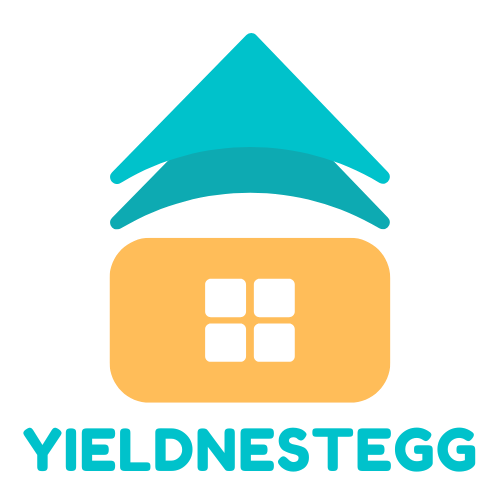In a world where digital distractions reign supreme, keeping your notes organized can feel like herding cats. But fear not! Making note cards on Google Docs is not only simple but also a game-changer for anyone looking to ace their studies or presentations. Imagine crafting vibrant, easy-to-read cards that fit snugly into your study routine, all while avoiding the chaos of scattered papers and lost ideas.
Table of Contents
ToggleUnderstanding Note Cards
Note cards serve as useful tools for organizing information. They facilitate efficient studying and allow for quick reference.
What Are Note Cards?
Note cards are small cards designed for jotting down key topics or concepts. They help condense large volumes of information into manageable pieces. Students often use them for memorization, while professionals utilize them for presentations. Often, note cards incorporate bullet points, diagrams, or highlighted sections to enhance clarity. Multiple formats, such as digital or physical cards, meet various preferences and needs.
Benefits of Using Note Cards
Using note cards boosts retention and recall of information. They simplify the study process, allowing users to focus on essential points. Color-coded designs enhance visual learning and make cards engaging. Organizing subjects or themes on separate cards enables targeted studying. Furthermore, the portability of note cards ensures convenience, making it easy to review on the go. Studies show that active engagement with material, like utilizing note cards, improves understanding and aids long-term memory.
Getting Started with Google Docs
Google Docs offers a user-friendly platform for creating note cards. Familiarizing oneself with its features enhances the note-taking experience.
Creating a New Document
To begin, open Google Docs in a web browser. Click on the “+” button labeled “Blank” to create a new document. Users can also choose from various templates, which may aid in organization. Naming the document immediately ensures easy access later. After securing a title, the canvas prepares for note card creation, allowing for an efficient start.
Setting Up Your Workspace
Organizing the workspace significantly impacts productivity. Adjusting the page layout is essential for note card formatting. Users can select “File,” then “Page setup” to customize dimensions, often opting for smaller sizes that resemble traditional note cards. Utilizing the “Table” feature can also help in dividing sections for distinct topics. Color-coding can enhance clarity; simply select the background color via the toolbar options. Overall, an organized workspace sets the stage for effective study materials.
Designing Your Note Cards
Creating well-designed note cards enhances their effectiveness as study tools. A thoughtful design makes information easier to process and recall.
Choosing a Layout
Select a layout that suits the intended use of the note cards. Consider using a grid format to host multiple topics on one card. This structure allows for organized visual segregation of information. A single-column layout works well for quick facts or definitions, while a multi-column format accommodates broader discussions. Experiment with margins to optimize space. Preview the document frequently to ensure the layout meets needs and facilitates easy reading.
Adding Text and Images
Incorporate text and images to enrich the note card experience. Use concise phrases for clarity, focusing on key concepts rather than lengthy sentences. Employ different font sizes or styles to emphasize important points. Images can include diagrams, charts, or relevant icons to complement the text. Ensure visuals support the written content and enhance comprehension. Integrate color-coding schemes to categorize topics, making it simpler to navigate through various subjects.
Formatting Tips for Note Cards
Formatting plays a crucial role in creating effective note cards in Google Docs. Paying attention to font styles, sizes, colors, and backgrounds enhances the overall organization and accessibility of the information.
Font Styles and Sizes
Choose visually appealing font styles to promote readability. Options such as Arial, Calibri, or Times New Roman maintain clarity. Select sizes between 12 and 14 points for body text, ensuring it remains legible without overwhelming the card. Use bold or italic styles for emphasis on key concepts. Mixing font weights can help differentiate headers from body text. Place essential information in larger fonts, around 16 to 18 points, capturing attention at a glance.
Color and Background Options
Consider color psychology when selecting hues for note cards. Bright colors like yellow and blue can create an inviting atmosphere, making studying more enjoyable. Utilize the Google Docs highlighting tool to mark crucial information, facilitating quick recall during review. Background colors may promote focus; light shades of gray or pastel tones typically work well. Pair text color with background choices for optimal contrast, ensuring legibility. Be mindful not to overload cards with color; simplicity aids in comprehension and visual appeal.
Saving and Sharing Your Note Cards
Saving and sharing note cards in Google Docs ensures easy access and collaboration. Users can prevent data loss by saving work regularly.
Downloading Your Note Cards
To download note cards, open the Google Docs file and navigate to the “File” menu. Selecting “Download” provides several format options including Microsoft Word and PDF. PDF format retains design integrity, making it ideal for printing or sharing. After choosing a format, files download to the device, ready for use. This functionality allows for offline access or easy sharing with peers.
Collaborating with Others
Collaboration is seamless with Google Docs. Inviting others to edit note cards occurs by clicking the “Share” button. Users can input email addresses of collaborators, providing options for view or edit permissions. Real-time editing allows multiple users to contribute ideas and suggestions simultaneously. Comments can enhance discussions regarding content, fostering a collaborative learning environment. This feature transforms note cards into collective study resources for teams or study groups.
Creating note cards in Google Docs is a powerful way to enhance organization and study efficiency. By utilizing the platform’s features users can design visually appealing cards that simplify complex information and improve retention. The collaborative capabilities of Google Docs further allow individuals to share and refine their note cards with peers.
With the right formatting and design strategies in place note cards become invaluable tools for memorization and quick reference. Whether for academic purposes or professional presentations these digital note cards can transform the way information is processed and retained. Embracing this method not only streamlines the learning experience but also fosters a more engaging and interactive approach to studying.



